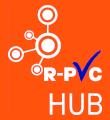The European Commission is teaming up with industry to improve the quality and cost-effectiveness of recycling plastics in Europe through the Circular Plastics Alliance, launched in Brussels in December 2018. The idea is to match the offer and the demand for regenerated plastics, whose imbalance is considered one of the main obstacles to the proper functioning of the internal market for recycled materials.
This is a step forward towards the objective contained in the EU Plastics Strategy, which aims to transform 10 million tons of recycled plastics per year into new products by 2025.
Frans Timmermans, First Vice-President of the European Commission, Head of Sustainable Development said: “Close cooperation within and through the plastics supply chain is essential if we are to arrive at a true circular economy and ensure that recycled materials are transformed into new products, instead of ending up in landfills or incinerators. The Circular Plastics Alliance wants to facilitate this cooperation, based on the voluntary commitments made by the plastics industry and encouraging even more ambitious actions. Europe is already leading this process and Europe will also be the first to reap the benefits. This is the best way to show the world that the circular plastic economy is good for businesses and the environment “.
From an operational standpoint, the Circular Plastics Alliance is a high-level multi-stakeholder platform that brings together all the players in the supply chain, from producers and processors of plastic materials to those who collect or recycle waste, including users and distributors in the sectors key to packaging, construction and automotive.
Three lines of action foreseen by the agreement:
Promote actions and investments in the short term, voluntary and coordinated by the industrial system, with the aim of improving the cost-effectiveness and quality of recycling, also with public support at community and national level. They range from separate collection of plastic waste to harmonized reporting on collection and recycling volumes; from investments in separation and regeneration plants of the various plastic fractions to the development of voluntary standards on eco-design.
Identify and signal the obstacles that can hinder the efforts of the interested parties to fully implement the commitments and reach the targets set for 2025. Some limits have already been identified, for example the lack of infrastructure, insufficient access to finance and gaps in the standardization.
Monitor progress towards increasing recycling of plastic waste and greater use of regenerated plastic at European level. Monitoring should help identify gaps in the supply and demand of the different regenerated materials. In parallel, new voluntary commitments will be encouraged.
